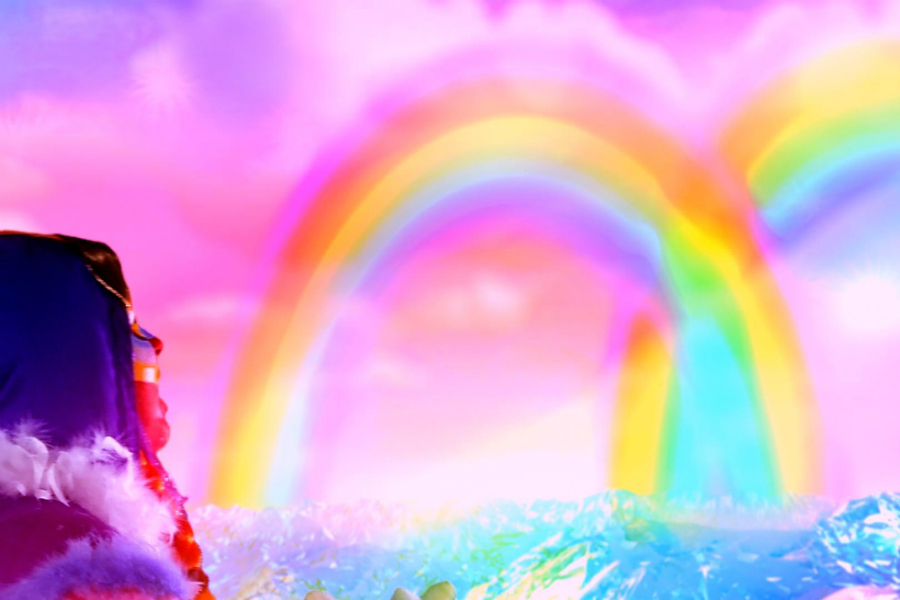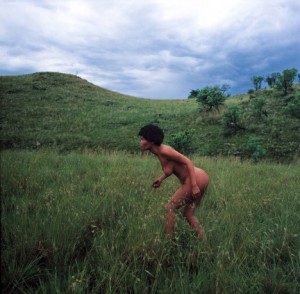Wysing Arts Centre’s Futurecamp: A Post-Gender World

Are we living in a Post-Gender World? What do the words ‘post’ or ‘gender’ actually mean to you? Alice Hughes takes an in-depth look at social labels, identity stereotypes and ideas about the ‘self’ at Futurecamp…
Over the summer, ten artists have been living and working at Wysing Arts Centre, Cambridge, within the residency programme Futurecamp. They have been contributing to a series of public artworks and events delving into questions of our future, including digital advances, environmental changes, education, gender and politics.
On my way to Wysing’s final Futurecamp event last week, A Post-Gender World, I felt self-assured. After spending months buried away in a dark and leaky student room reading every gender theory possible from my university library, I’d come up with my own equation for a world without gender in my final year dissertation.
However, at Futurecamp, I soon realised because everyone held different views about what constituted ‘post’ and ‘gender’, it would be an extensive struggle to even discuss what a post-gender world might be. Some said we were already in the ‘post’ stage of genderless possibilities, while others thought we were nowhere near.
I was able to form my own thematic narrative from the series of works featured at Futurecamp — although I’m sure everyone constructed theirs differently. An inconvenient truth ascended: digital dreams of virtual realities and the freedom of avatars now within our reach have not offered the escapism they once promised. Instead, there is an ever-mounting pressure to prove our position as an authentic-self; we have not escaped definition, but locked ourselves more rigidly into identity boundaries and games.
True, you may now be able to identify yourself as transexual or ‘intersex’ on Facebook, but the fact that you have to classify your sexuality at all suggests a legitimate identity must involve a string of labels and categories.
As if all caught behind-the-scenes of a macabre reality show, we must always have a story attached; a list of the things which makes us stand out from the rest. In Zackary Drucker’s and Rhys Ernst’s She Gone Rogue (2012), the transgender protagonist is pulled down a rabbit hole by the prophecies of a TV psychic, offering ‘the man of [her] dreams’ and a sacred vagina. Yet all she can do, through-the-looking-glass, is exist within a multi-dimensional play of trans-feminine archetypes. Upon completing a full circle and emerging on the side of reality, she’s left with questions rather than a stable identity.
Rachel Mclean’s Over the Rainbow (2013, pictured), shot entirely using green-screen to present a nightmarish computer generated environment, eclipses difference into a monotonous Technicolor dream world. In dark allusion to the McDonaldization of society, all the characters are performed by Mclean, so blending into one army, producing sickly-sweet rainbows and bug-eyed bears.
Luckily there was escape. Jess Wiesner presented a new performance I’m Not Ready To Name It Yet (2014), where she juxtaposed video with live event. Her script was performed by Alice Frick, who acted as her alter-ego, allowing her to transcend her static body and identity. Wiesner’s video explores the gender preconditioning latent in cartoon characters, such as the persistent female skunk chaser Pepé Le Pew. In this sense, ‘post’ was demonstrated as experience itself; by re-assessing past conditioning, and documenting that through her alter-ego, Wiesner created a splitting between her past and present selves.

Like in Rachel Mclean’s Over the Rainbow, the protagonist enters a Britain’s Got Talent fantasy through her fairytale colouring books. She grows into a reincarnation of Robert Browning’s My Last Duchess, able to detach her own head and reap revenge against her world.
A similar prospect of continual metamorphoses is evident in collective d3signbur3au’s post-gender character Agatha Valkyrie Ice, who they have brought to life through social media. Agatha’s potential is captured by ‘A.I’ imaginings of escapist landscapes and islands. In the foyer of Wysing Arts Centre, Richard John Jones’ installation Keeping Watch Above the Flowers (2014) — which juxtaposed wilderness paintings of the Hudson River School with photographs of women making camouflage netting for men fighting in WWII — was a perfect framing mechanism for the transcendentalism embraced across the works, in its doubled reference to historical and viewer erasure.
Seeing Tracey Rose perform first-hand was a privilege, after having a longstanding love affair with her self-portrait Venus Baartman (2001), whereby she poses as Sarah Baartman, a Khoi-San woman from Capetown, South Africa, known by the racist name the ‘Hottentot Venus’ after she was brought to Europe in 1810 and exhibited as a side-show attraction. Instead of repeating an iconography of oppressed victims, Rose’s portrait releases Baartman into a powerful afterlife, so reflecting the strength of past and present black females.
In the same recapitulative way, her performance at Wysing KniggerKhaffirKhoon or KKK, merged model colonial postures with modern media depictions of African Americans in the form of a ventriloquized speech/performance, to reveal we are very far from being ‘post’ oppression; the present is a fictional mutation and recycling of the past.
For me, the ventriloquist aspect, combined with Rose’s appropriation of a mask and costume from Cambridge, represented the gap in much ‘post-gender’ discussion which centres upon Western issues. The soundtrack of poetry written by two South African poets, KKK by D.E. Fault and Blackheart by Lesego Rampolokeng, detached from her performative stereotyped body, and underlined the need for a permanent space for marginalised voices, in a world where the English language is privileged.
Rose herself, after telling an amusing story about painfully shitting out ‘colonialist’ food in front of Goldsmiths, noted that despite the quest for youth in the works shown and its reflection upon the ‘third sex’ position of Western post-menopausal women, older female dancers in Ghana are much more respected than their younger counterparts. This shed light on Leslie Thornton’s Sahara/Mojave (2006) which overlaid vintage erotic North African postcards and video footage she shot at Universal City in LA; it seemed two-dimensional in comparison, even replicating oppositional ethnocentrism.
A criticism arose when discussing the Anne McGuire video Joe Dimaggio 1, 2, 3 (1991) which satirically portrayed the desperate/psycho/crazy-bitch-female archetype, often nurtured by chick flicks, as a socially constructed machine. The curator, Futurecamp residency artist James Richards (nominated for the Turner prize 2014), was asked: Why did you choose all female artists? He replied that his choice was rooted in the works in their own right. And surely he was right in his suggestion that an artwork should not be judged by the body of its signature?
Together, the escape of the artists from their static bodies through alter-egos, doubling and sinuous imagery, became a kind of sharing which bent self/other subjectivity out of proportion with the true nature of humanity. In performing stereotypes and reiterating identity categories we repeat them; whilst it is the articulation of identity, as always, already in process which sets us free.
The artists’ collective desconstruction of binaries became more than fashionable androgyny, in its working towards a renewing human fluidity. Jess Wiesner captures this perfectly in I’m Not Ready To Name It Yet, where she expresses a fear common to us all in a voyeuristic realm: “my body is three-dimensionally messy, it’s always doing the wrong things at the wrong time”.
Across the works were clouds, lubrication, waves and unspoilt landscapes. Such images comforted me; because there was no agreement among us regarding what constituted ‘post’ and ‘gender’, there will never be one monolithic world order. Through listening to each other and accepting everyone’s views and aesthetic approach as valid, the conference marked an embracing of difference — a multiplicity of voices and identities made stable through mutual recognition and documentation.
Perhaps there is no answer to what a ‘Post-Gender’ world might be, except that in such a space the self becomes multiple. A multiple utilises transcendental abstraction akin to Eve Sedgwick’s nonce taxonomies (see Epistemology of the Closet (1990)). This involves the making and unmaking, re-making and re-dissolution of hundreds of old categorical imaginings, to show other possibilities of desire and subjectivity which cannot be placed in male/female, homo/hetero. A multiple travels against socially conditioned utterance – they are autonomously mad and embrace the limits of identity, rather than imposing fullness on themselves or the other.
Alice Hughes
This article has been specially commissioned for The Double Negative by Liverpool John Moores University and Arts Council England. Part of the collaborative #BeACritic campaign — see more here
Read more about Wysing Arts Centre, Cambridge and on Twitter
Images: Tracey Rose,Venus Baartman (2001)






